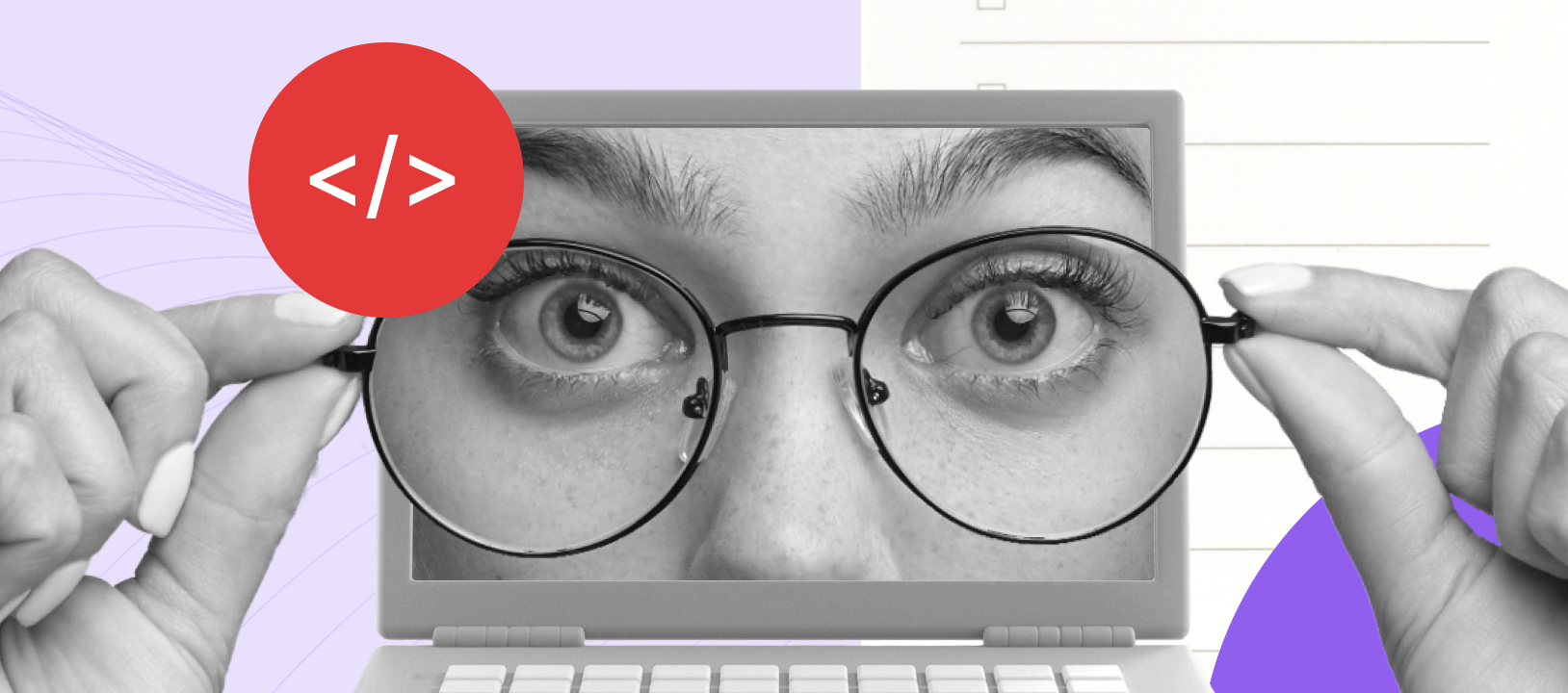While in this blog we’ve already explored the intricacies of generative AI and its applications across industries, there’s one field we’ve deliberately saved for last—software development. Here, AI powered technology is a lot more than just a nice-to-have accessory; it’s becoming a developer’s reliable partner.
Serving as a second set of eyes and hands, generative AI takes on repetitive and mundane tasks within the software development life cycle (SLDC) that don’t necessarily require human expertise. By freeing engineers up for higher-level activities, this automation leads to fewer human errors, higher productivity, considerable time savings, and faster product time to market.
In this post, we’ll explore the ways AI powered solutions are reshaping each stage of the software development lifecycle.
Requirement Gathering
According to a study, projects with clear requirements before development are 97% more likely to succeed. Generative AI’s ability to extract valuable insights from large datasets significantly minimizes the risk of potential failure.
Software teams can leverage this capability to mine crucial information from various sources, including stakeholder interviews, emails, existing documentation, and related projects. Generative AI can not only analyze this data, but also produce requirement documents, refine them based on feedback, and simulate scenarios to anticipate future needs.
But no matter how proficient AI is at deriving meanings, it may fail at grasping the nuanced context and specific needs of a project. Furthermore, requirements often involve subjective judgments and preferences that the technology may find difficult to capture accurately.
However, a recent Thoughtworks pilot study found that by providing AI powered tools with comprehensive domain knowledge and architectural context upfront, it was possible to generate high-quality user stories, significantly shortening lead times in requirements analysis. Therefore, AI assistants can benefit this stage of SDLC but only if they’re properly instructed and supervised by human specialists.
Design
After stakeholders agree on requirements, it’s time to draft an initial version of the project that defines how the solution will be built and how its components will work together. This is where generative AI can fully realize its creative potential.
By analyzing project requirements and considerations for scalability, security, and maintainability, these tools can outline both the architecture and UX/UI design of the end product. This includes suggesting optimal software components, suitable technologies, and database schemas. AI can also propose design elements, user interfaces, layouts, user journeys, flows, style guides, and accessibility features.
Still, a limitation is that AI cannot reliably create complete architecture designs for complex systems, as it may struggle to fully account for intricate system interactions, specific project constraints, and evolving business needs. Human oversight is essential to ensure the architecture is robust and aligns with the overall project goals.
In addition, AI powered tools may encounter challenges when addressing non-functional requirements like scalability and security. These areas often demand a deep understanding of context and expertise that AI may not yet possess. Human input remains crucial for fine-tuning these critical aspects, ensuring that the final design is both secure and scalable enough to support long-term growth and stability. Ultimately, while AI can accelerate and enhance the design process, it works best as a complement to human creativity and judgment.
AI Powered Coding
Moving from design to coding, we see where AI powered solutions deliver their most significant value. By offering automated code generation, they relieve developers from grunt, tedious tasks, allowing them to focus on more challenging and satisfying activities.
These AI assistants can autocomplete coding statements as the developer is typing, provide suggestions for the next lines based on context and the user’s natural language inputs, flag errors, and answer programmers’ questions in real time.
However, it is essential to thoroughly review AI-generated code, as it can present risks such as security vulnerabilities, performance issues, technical debt, and license compliance concerns. Careful evaluation is necessary to ensure the code adheres to all relevant standards and does not introduce new problems into the system.
On the bright side, the results of Stack Overflow’s 2024 Annual Developer Survey, which gathered insights from 65,000 developers, highlight the tangible benefits of AI tools for coding. When asked about the biggest advantage of AI programming technology, 81% of respondents identified increased productivity, and 71% of beginner programmers and 61% of professional ones named accelerated learning.
Furthermore, a GitHub study involving 2,000 developers revealed that the use of AI powered tools has a positive impact on programmers’ well-being. Between 60-75% of respondents reported feeling more fulfilled in their jobs and experiencing less frustration while coding.
Software Testing
One of the main advantages of generative AI for software testing is the ability to automatically create comprehensive test cases based on thorough analysis of application specifications, user requirements, and historical usage patterns.
This automation diminishes the need for manual testing, saving time and minimizing the risk of errors. Moreover, it broadens test coverage by incorporating a wider range of potential inputs and scenarios. Currently, test case creation is the most sought-after AI application in QA, with adoption rates exceeding 48% among medium and large organizations.
Furthermore, AI powered technology streamline the time-consuming process of finding or creating test data, which, studies show, can consume up to 44% of the testing stage. Generative models allow QA specialists to input a small sample of real-world data or define specific parameters for the desired data. AI then analyzes this input to generate large volumes of realistic synthetic data that possesses the same properties as actual data. When real data is used, these tools can anonymize it to protect privacy and sensitive information.
This approach not only saves time but also enhances the quality and diversity of test data, leading to more robust and comprehensive testing processes. Currently, over half of QA teams leverage generative AI for efficient test data creation.
Deployment
Once the software successfully passes all tests, the software team prepares to deploy it from development to production, where it will first encounter end users. Traditionally, this has been a time-consuming, often manual process, prone to errors and delays. However, generative AI now offers engineers valuable assistance at every step, streamlining mundane tasks and proactively identifying potential bottlenecks and issues.
Smart AI powered assistants can craft deployment scripts and design comprehensive pipelines and workflows, providing step-by-step guidance for successful implementation. This technology automates various routine processes, including code packaging, environment setup, configuration management, and deployment orchestration.
Are AI Powered Tools the Future of Software Development?
Apparently, they are. According to Gartner predictions, 80% of the software development life cycle will involve code generation powered by generative AI by 2025. A question that logically arises: “How involved will AI be exactly?”
It’s hard to tell yet, but what we know for sure is that smart technology has already ushered in a brand-new era, where code is written by computers and reviewed by skilled engineers. Despite speculation, it doesn’t mean the full extinction of developers. Software engineering and programming will still require human creativity and expertise that AI doesn’t possess, especially when it comes to creating complex solutions.
This AI powered automation, however, will indeed transform the role of software engineers as we know it. Through 2027, generative AI will create new roles and operations that will require 80% of the workforce to upskill, Gartner claims.
At Softarex, we’re excited to embrace this innovation. We see generative AI as a powerful tool to deliver more innovative solutions quicker and more efficiently to our clients. By integrating it into our development processes, we aim to enhance our team’s capabilities and push the boundaries of what’s possible in software engineering.
Looking for a partner to bring your software ideas to life? Contact us to discuss how our experienced team can turn your vision into reality, leveraging the best of both human expertise and technological innovation.









